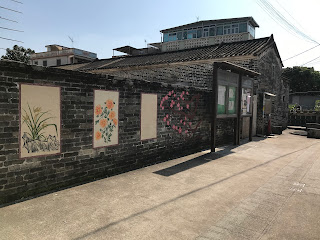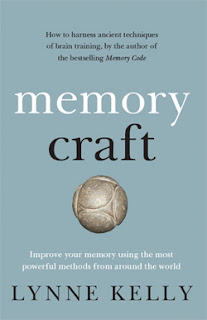Trust Issues and History Walks
However. I've set my mind to noticing what might work and to getting over my judgemental huff.
In the area where I walk around on weekends and sometimes evening without any special effort required, there are some murals going up and some buildings with probable longevity. And some like the schools, Post Office etc will probably stay.
Travelling a bit further, still on foot, there are some registered historical buildings such as the old school house and some ancestor shrines on the other side of the bypass. This is about a 90 min return walk we like because it ends (after 45 min) at the 'Tree that ate the house'. [Note: with some work, we could turn it into a loop walk. We currently take the same route home]. This is a Banyan Tree that took over a house and retains the shape and some bricks of the house. It's really so loveable. And the story of the house is that it was abandoned in the time of the 'great coastal evacuation', one of the many horrific events of Chinese history when an emperor, frustrated with 'piracy' - which was in fact the remnants of the previous regime hiding out in Taiwan and taking potshots at his navy - announced that no one was to trade with the pirates, and therefore no one may live on the coast. He forced the entire coastal fishing/farming community of HK (at that time San On County) to move (2 Lis? I forget again) inland on pain of death. Anyone remaining would be assumed to be in league with the pirates and executed. Most of them moved (to where? to do what?) and didn't survive. When eventually the decree was lifted, a much reduced population returned (did they still have fishing/farming culture?). And the owner of this house was one who
didn't return. It's also possible this was his ancestor shrine which is why no one would have just moved into the unoccupied residence. I'm not sure how accurate the story of the house is, as I'm not sure how long Banyan trees can live nor how fast they grow. The Great Evacuation was 3 or 4 hundred years ago. But it's a fabulous symbol and a magical tree. Evidently I can't remember which emperor or which dynasty despite looking it up every time I want to talk about it. So that's a thing. There will be more information in a new book I'm picking at by Pat Hase.
Ok. Update after consulting Pat's book: General Shang KeXi, titled Pingnan Wang, Prince of the Peaceful South (for defeating the Ming emperor), under the new Qing emperor, ordered the evacuation to 50 li (里) or about 25km from the coast. Ming loyalists under KoXinGa in Taiwan were raiding the coasts, the Qing had no ships.
Edict ran from 1662-1669. Previously, plague and bandits had devastated the population. No provisions made, over half died. Maybe 1 in 20 returned.
Sam and I are planning to map out a history walk. Sam wants to start with Chinese history. That's a good start because it's both big and very useful. He has exams in Chinese History and he knows a bunch of 'characters' that would be useful to me. I think we should do it together, the picking out of the salient features. But of course our encoding will be individual. My personal focus in history is the 19th and 20th Century in Europe as I have a family history project around Latvia. But I'm really interested in Chinese History too, and Olly will be be able to inherit Chinese history if she goes the same way as Sam.
I think I'm about to mix here the ideas of a history walk and of memory palaces using local historical buildings. I'll put memory palace ideas in another post.
So here's a plan:
To print out a google map of our area and the places we walk.
To map out the period of time we want to cover and break it up into useful lengths.
To walk the walks and choose salient features as key points.
To record them on our map. To begin to pop in events and people to populate our walk.
Can't wait for Christmas, got about 10 days off and nice walking weather.
I might update this project onto this page. Or I'll put a link here to the blog entry with the update. There are going to be a lot of threads of different projects.








Yeah, there are WAY too many real estate agencies. Like, I get that their real-estate agencies but how do they get so much real estate? By selling those shops alone they could probably house about a 1000 people.
ReplyDeleteBut I digress, the Tree that ate the House is a good walk, and I think we should start walking around there. I've walked a couple of times myself and found numerous ways to get there. We could probably find one singular loop that works really well. Unfortunately quite a lot of them have roads on them that would quite annoyingly have quite a few cars. The ones that don't have way too many people. But we'll find a way that fits us.
Let's do it tomorrow! Or Thursday. Or both.
ReplyDelete